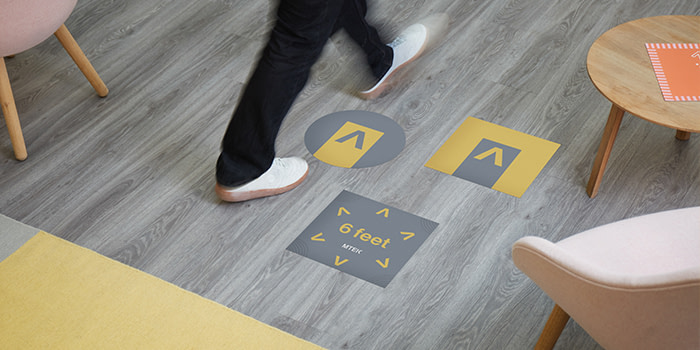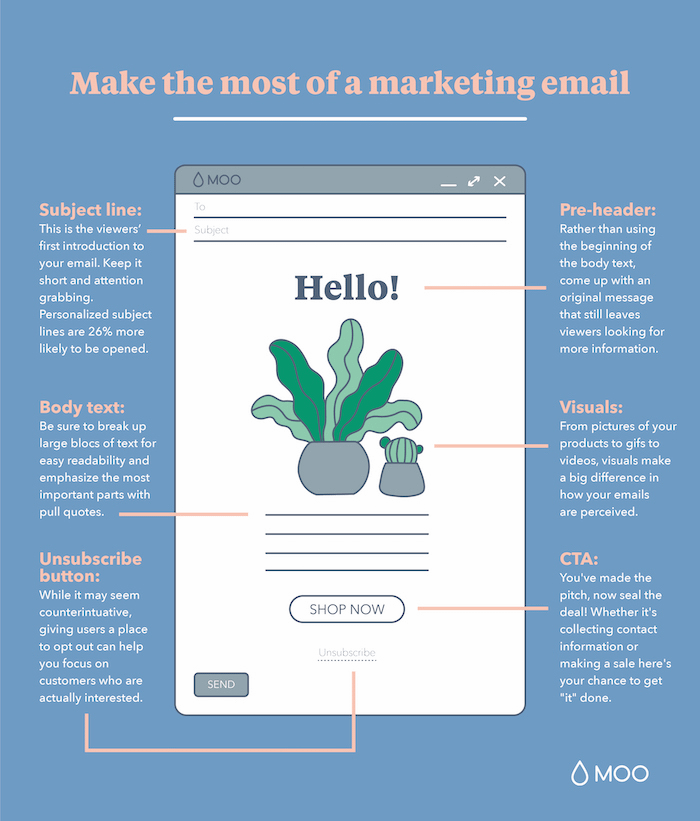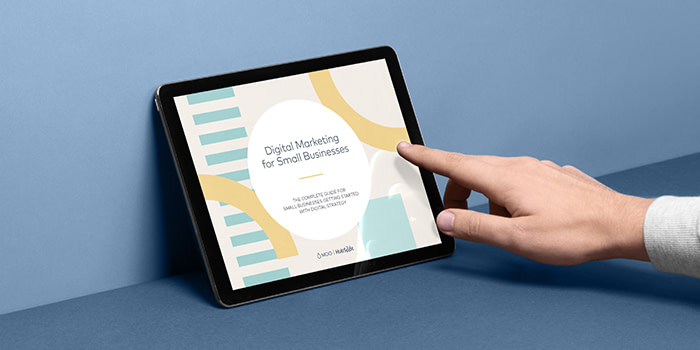4 important remote work trends and tips in 2021
2021 has seen companies solidify how to make remote work a permanent part of how they do business.

Just over a year ago, you may have only known a few people who had made the switch from the cubicle to a home office. That changed almost overnight with the COVID 19 pandemic. Now, remote work is the norm in many industries — and looks to remain that way. 2020 was all about adjusting to Zoom happy hours and endless email chains. So far, 2021 has been the year executives solidify how to make remote work and remote hiring a permanent part of how they do business — even after the pandemic is over.
Why remote work is here to stay
While lifted restrictions and increased vaccination availability mean that many parts of our lives can start looking like they did before we knew what a coronavirus was, don’t expect the remote working trend to go anywhere. From more time in the morning and the ability to live anywhere to make-or-break meetings in sweatpants (you know you’ve done it), a remote job has a lot to offer. A survey from LiveCareer even found that 29% of remote workers would quit their jobs if forced to go back in full time. With so much enthusiasm for remote work, it’s no wonder that most businesses — more than 80% according to Gartner — plan on continuing to allow it on an at least part-time basis.
While both employers and workers seemingly agree that work-from-home capabilities should continue, what exactly that looks like is up in the air. How much in-person time will be required? Which business processes are affected if remote work is more than a temporary measure? There’s no doubt that navigating the next few months will be a challenge. Even if you and your team elect to stay remote for the foreseeable future, you’ll still probably need to make some changes.
How businesses are making remote work a part of the plan
As you and your business start crafting a strategy for the future, consider the following remote work trends:
1. Using a hybrid model to mix and match their way to success
Remote work doesn’t have to be an either-or proposition. Many companies are looking to implement a flexible work model — with employees spending a few days a week in the office and the rest at home. Several major companies, including tech giants like Twitter and Facebook, have already announced that hybrid work will be par for the course moving forward.
A hybrid workplace offers serious advantages both right now and permanently. By limiting the number of team members doing in-office work, you cut down on the number of people exposed to a potential COVID 19 outbreak and make contact tracing easy, while still allowing each worker to have the in-person collaboration they need for increased productivity. Once the pandemic is over, a remote work option can offer flexibility and help employees with their work life balance.
The right mix of in-person and online working will depend on your business and company culture. You can either allow employees to decide for themselves which days they come in or assign days to keep teams together and make collaboration easy.
2. Supporting employees’ remote setup to increase productivity
At the beginning of the pandemic, some worried that remote work would slow down productivity and make it hard to hold workers accountable. Luckily, those fears proved misguided. In a September 2020 study from HR consultants Mercer, an astounding 94% of survey respondents said that productivity had increased since workers began to work from home. Many employees feel they have fewer distractions at home than in the office and appreciate the added flexibility of a remote setup.
Moving forward, there’s still a lot that employers can do to help employees stay productive. One major missed opportunity for many companies so far has been in how they support remote workers with children at home. According to a January 2021 survey from PwC, fewer than half of workers felt that their employers were providing enough resources to meet the unique childcare challenges of pandemic life. An example of a company that’s tried to step up to the plate is Patagonia, which surveyed parents and in some cases even rebuilt schedules and project assignments to accommodate individual needs.
3. Hiring for a remote workforce
Businesses on the hunt for new hires used to be limited by geographic constraints. By offering remote work opportunities, a company in New York City can now hire a talented programmer in Montana — and vice versa! Remote work has proven especially important for small businesses looking to close the talent gap, as these companies are almost twice as likely to hire full-time remote employees.
As teams begin to incorporate more new hires who may live far away or have never actually met their co-workers in person, it’s important to find ways to build camaraderie. Remote employees may feel left out of the kinds of conversations and inside jokes that flow in an in-person setting. Try bridging the gap by organizing small online meetings so team members can just chat, similar to how they would in an in-person setting. Have office get-togethers for employees who live nearby — once it’s safe to do so. You can even make a connection with handwritten notes and Greeting Cards.
4. Making remote work a part of their sustainability strategy
In the midst of adjusting to a global pandemic, your company’s “going green” initiative may have been placed on the backburner. Luckily, remote work can play a big part in any company-wide effort to keep carbon output at a minimum. Remote workers cut down on emissions by skipping the commute, especially if they were previously driving rather than taking public transportation. If your team has elected to go permanently remote, then you can kiss your office energy output (and bills) goodbye. Even if a physical office space is still necessary, dropping down to a smaller unit or renting co-working space can help slash emissions.
Of course, with workers spread out, it can be harder to actually track environmental impact. Employees who keep their heat on during the day, when previously everyone might have been out of the house, must now be factored into your calculations. Bandwidth and shipping can also produce relatively large amounts of carbon. In addition to measuring these factors, employers can also look for ways to reduce them. The energy service Arcadia, for example, launched a service where employers can offer the installation of a renewable energy source (like solar panels) as a remote work perk.
Ultimately, your new remote work strategy can keep sustainability in mind by considering and responding to these new factors and even making your reduction goals a little more challenging to keep the ambition high and reflect your new work reality. If done right, your organization’s move to a remote workplace can be great for employees — and also the planet.
Need a business printing plan that works with your remote setup? MOO offers a user-friendly digital platform and multi-location ordering and shipping.
Fill out the form here and a friendly Account Manager will reach out to you.
Think your office is ready to make the transition to in-person work again? You’re not alone. With pandemic restrictions being lifted and vaccine accessibility expanding, many offices are marking their calendars for their first day with open doors. Based on a recent LiveCareer survey, 79% of workplaces are planning to return to an in-person environment.
What that return will look like, however, is a different question. Many employees want the option to continue remote work at least part-time and COVID-related concerns still abound. While it’s easy to be hopeful for the future, it’s important to ensure you’re still opening up safely — including social distancing in the office, mask-wearing and contact tracing. If you and your employees feel that reopening is the right call, here are four ways to get it done:
1. Mask up
Whether you’re a customer-facing operation where new faces are constantly coming and going or just working with an internal team, mask-wearing is an essential part of office safety. Masks significantly reduce your risk of catching COVID-19 and are even better at preventing transmission if you’re unknowingly infected. It’s no wonder the Center for Disease Control and Prevention recommends that office workers mask up whenever social distancing rules aren’t possible.
What kinds of masking policies your team puts in place should be based on the size of your shared space, as well as state and local social distancing measures. A common approach is to allow employees to work maskless at their desk (as long desks can be easily spread out) but require them to wear masks when moving around the office.
One of the easiest ways to ensure both employees and visitors stay safe without slowing down productivity is by keeping a stockpile of fresh masks at the ready. Want to combine employee safety, environmental smarts and marketing synergy? Replace those standard blue surgical masks with ones made from sustainable cotton paper that feature your brand’s logo and color scheme.
2. Create your office layout around easy physical distancing
Even if group meetings and easy collaboration are some of your key motivators for returning to the office, it’s important to keep employees spread out when they’re working solo. Experts say open office designs and features like long desks with multiple workers at them will probably be a thing of the past. Instead, prioritize workstations that are at least six feet apart and have a physical barrier. If workstations can’t be moved a safe distance apart, then try placing Flyers on the desks that are off-limits.
In addition to carefully placing desks and office furniture, you and your team should examine ways to promote physical distancing in hallways, the break room and other shared space. One of the easiest ways to maintain the ever-important six feet of space is by making walkways, exits and entrances each one-way. Try using colourful Floor Decals (available with an business plan) and Posters that keep foot traffic moving one way.
3. Have a contact tracing plan to slow the spread
From restaurants that take down your contact information with a reservation to COVID-19-positive family members calling to tell you to quarantine, contact tracing has been a big part of keeping people safe during these challenging times. Your office can keep the trend going by appointing a COVID 19 coordinator, per CDC guidelines, to ensure everyone’s phone number is on file and report any positive cases to the local health authorities.
To aid contact tracing efforts, be sure to limit the number of employees working in the office at one time. While a completely in-person workplace might be the desired goal, smaller groups make it easier to determine who may have been exposed in the event that someone in your office tests positive. Figuring out who comes in on which days is up to you and your employees. Just be sure to keep a record of who’s present on any given day, perhaps with a sign-in Notebook and set of clean pens.
4. New work setting, new attitude
At this point, it’s become a cliche to talk about how the months ahead will be a “new normal,” rather than a return to normal. That doesn’t mean it’s not true. While physical changes, like masks, spread-out desks and video conferencing may seem like the priority, your office culture will probably also need an update.
After a year without Friday happy hours and late-night conference room meetings, your natural inclination may be to go full speed ahead. However, there’s no guarantee everyone on your team will be on the same page. It’s important to develop a reopening plan that works for everyone — that could mean anything from bringing everyone back on a 9-5 basis to more of a hybrid model. As you reopen, be sure to stay in tune with the needs of your coworkers. This pandemic has been a stressful time for everyone. Now’s a great time to show leadership through empathy.
Ultimately, your return to the office is a great time to reflect on the lessons learned during the year away and incorporate them moving forward. From video conferencing and remote hires to simply giving your employees more flexibility, the “new normal” is your opportunity to create a workplace that’s safer than ever before.
Ready to re-open? MOO can help you stay safe with customized products designed for the modern workplace.
Fill out the form here and a friendly Account Manager will reach out to you.
Effective management goes beyond inspiring speeches and hitting your numbers. It’s about communicating a vision and doing the little things on the day to day. With the “new normal” of remote work adding an extra hurdle to collaboration, businesses need leaders who can bridge the gap and get the most from each staff member. Your resume may or may not have “manager” on it. But, either way, others are likely to look to you for guidance at some point — especially at smaller businesses with fluid roles. Have you ever wondered what it would take to do better by them?
Being the best leader you can
A good manager can come in many different packages. While some tend to have a more hands-off management style — demonstrating trust in their employees — others focus on every detail and inspire by caring. The very best leaders know how to set performance expectations, mix and match effective training strategies and motivate each staff member. Striving to become the leader you’ve always seen yourself as? Consider these five ideas.
1. Craft clear goals that everyone understands
Your workers can’t meet their targets if they’re not sure what they’re working for. Effective performance management isn’t about putting a list of numbers in front of your team and yelling if they don’t hit them. The best bosses examine the processes in place to hit goals and are constantly looking for ways to refine them.
Part of setting goals that everyone understands is including employees in the process so they feel an extra sense of ownership. This is a great time to clear up any possible misunderstandings, preventing inefficiencies down the road.
2. Make collaboration and open communication easy
Teams work best when employee engagement is high. To create a sense of a shared mission, make sure the channels are in place for open communication and collaboration. Even if two staff members are working on unrelated projects, they still may have ideas for each other or can provide a fresh set of eyes. Not only should you value these interactions, but actively encourage them. Try setting up knowledge-sharing meetings between departments where employees can grow their network and form partnerships.
You can also encourage a more open environment with your attitude. Don’t shoot down questions, even the “wrong” ones, and take the time to listen carefully to ideas and concerns. Ultimately, while it’s not a trait always associated with the cut-throat world of business, it’ll often be the more caring, empathetic leadership style that has the greatest impact.
3. Incorporate employee appreciation year-round
A little gratitude can go a very long way. Saying thank you to your workers for all they do is an easy way to keep morale high and productivity flowing. The best managers know that employee appreciation needs to be practiced regularly and not just put aside until the holidays (although sending out seasons greetings cards to your team is a fantastic idea). Recognizing workers who go above and beyond encourages better work, fosters openness and helps with retention. Plus it’s just a nice thing to do.
One small — but effective — idea for giving back is to send your workers a practical gift, such as a Notebook from MOO. If your team members are all working remotely, it can be challenging to feel connected to the overall company. A physical thank-you gift can be a nice reminder and motivator.
4. Consistently set the example
Sometimes, the best-set expectations in the workplace are unspoken. Be the kind of person you’d want to work for, day in and day out, and your employees will be sure to respond accordingly. If you want your employees to work until a certain time, for example, but cut out early yourself, it’ll be difficult for you to ask the team to work late with any real authority. Likewise, if you’re trying to model a good work-life balance, be sure you’re not sending out emails late into the night (or at least scheduling your emails, so your employees don’t feel obligated to respond while they’re off the clock).
As with most areas, consistency is essential. Your team won’t know what the standards are if they change from time to time.
5. Never forget to have fun
Depending on who you are, this may be either the easiest or hardest item on the list. Employees tend to be more productive when they’re excited to come to work and genuinely enjoy what they do. According to a 2019 study by Oxford University’s Saïd Business School, workers are about 13% more productive when they’re feeling happy. As a manager, you can help let the good times roll. An infectious, positive attitude shouldn’t just be limited to when business is booming. While there’s no need to sugar-coat a setback, having a bit of encouragement at the ready when things inevitably get tough can go a long way.
It only takes one person to turn a company’s culture around. As a manager, you’re perfectly positioned to be that person. After all, if you’re not coming to work with a smile on your face, why should your employees?
Ultimately, being a great leader is about more than understanding your sector. It requires great interpersonal skills and the ability to recognize what empowers the people who work for you. Now go out there and motivate!
Want to show your team the kind of boss you are? Get them premium Notebooks and a business plan for all of their print needs.
Fill out the form here and a friendly Account Manager will reach out to you.
Quick show of hands: When was the last time you had a face-to-face meeting with your entire team? What about a company holiday party or a celebration over a quarterly win?
We figured as much.
Increasingly, remote and hybrid work environments are becoming the norm as more companies embrace once temporary work-from-home policies as a permanent change. While the benefits are clear — boosted morale, minimized overhead expenses and increased productivity, just to name a few — there are still several challenges leaders will need to address. One of the most pressing? Finding a way to create a company culture and showing your thanks for your employees when you’re no longer interacting in person.
Need some ideas for employee appreciation? Learn how you can stay connected with your team and show your employees appreciation for everything they do even when you’re far farther than a cubicle or hallway away.
The importance of employee appreciation
After being in a global pandemic for almost two years, frontline and public sector workers such as food service professionals, teachers and health care workers are under more strain than ever. At the same time, organizations in almost every industry are downsizing and restructuring, with fewer resources available to support a burned-out workforce.
As we approach the end of 2021, only about 30% of workers are still feeling engaged and valued in their current roles, as found in a recent Gallup survey. This lack of morale stems from several different factors, including burnout and the pandemic-related uncertainties still being felt around the world. However, there is one common theme being reported across nearly every role: a lack of recognition.
You know you can’t get the job done without your current team, but do they know you feel that way?
Employee recognition is a way to reward workers and reinforce both your organization’s goals as well as your team culture. An employee recognition program can include just about anything and everything your company does to praise or recognize a colleague’s success and hard work. While these initiatives often come from the top down, they can also be shared on a peer-to-peer level. In fact, if you’ve truly succeeded in fostering a positive team dynamic, peer recognition will come naturally.
Showing your thanks for everything your team does won’t just earn you the title of “Boss of the Year.” Check out just some of the benefits of creating a strong employee appreciation program:
Increase employee retention
We’ve all heard whispers of the “Great Resignation.” More and more often, employees are leaving their current roles and seeking greener pastures. Why? According to one study from Gallup, the leading cause of turnover across the country is an overwhelming lack of appreciation. The majority of American workers surveyed — just over 60% — reported that they didn’t feel appreciated or regularly recognized at work.
Engaged employees are happy employees — and they’re far less likely to leave. The same study found that workers who are happy in their current roles would need to be offered at least a 20% pay increase to even consider a new position. So, as we’re facing a widening skills gap and a tightening labour market, giving your current team an even better reason to stay can help stop the Great Resignation from knocking at your company’s door.
Improve recruitment efforts
As you consider professionals across the country who may be searching for new opportunities, an appreciation program can help you ensure it’s your company they’re searching within.
In a survey conducted by the Society for Human Resource Management (SHRM), 68% of HR professionals agreed that employee recognition not only has a positive impact on retention, but the majority of hiring experts also reported that such programs can also help with recruitment.
As you work to attract new talent and bring new members onto your team, demonstrating an appreciation for your current employees can be a great way to show off your company culture.
A boost in morale
A little recognition can go a long way. In the same study from the SHRM, 82% of companies saw employee happiness significantly rise by introducing an appreciation program of their own.
Plus, when employees are satisfied with their organization, it becomes easier for them to stay focused and energized throughout the workday. According to a 2019 study by Oxford University’s Saïd Business School, on average, happier employees are about 13% more productive than their dissatisfied peers.
OK — we can all agree saying thanks to your team is not only important, but it can also lead to some pretty powerful benefits as well. With that being said, employee appreciation requires more than just a one-time card during the holidays (although these are a fantastic way to say thanks too).
Everyone wants to be a part of a company with a culture that continually rewards hard work and makes employees feel valued for their contributions. Year-round employee appreciation initiatives are the key to making that goal become a reality at your workplace.
So, let’s dig into ideas for employee appreciation and the unique ways you can show your team your thanks without piling on to any existing Zoom exhaustion.

Ways to show gratitude that work right now
Out-of-office excursions
While the pandemic initially made it difficult for teams to celebrate accomplishments together, increasing vaccination rates and dropping instances of COVID-19 offer you and your company some added flexibility.
We just have one word of caution before you start planning your out-of-office excursion: Try to make it feel like a true reward rather than an extension of the workday. Throwing an event at 5 p.m. on a Wednesday might just lead to employees feeling annoyed or, at worse, even more disengaged. Instead, try to plan your event on a Friday, and if possible, during the workday.
OK, now that that’s out of the way, are you ready to show your thanks? As you think of fun ways to get everyone out of the house or the office and enjoying one another’s company, consider any one of these company-sponsored activities:
Escape rooms
Get your thinking caps on and bring the team to an escape room, a life-size puzzle and mystery game. Not only can this be a fun way to say thanks to your employees, but it can also help them boost their collaboration and communication skills as they work to crack the challenge together. Take advantage of a fun team-building exercise while also creating a unique appreciation program.
Plus, for teams who aren’t ready to meet in person or are located across the country, virtual rooms exist too. This is a great virtual employee appreciation idea.
Competitive challenges
A bit of healthy competition never hurts anyone. In fact, done right, it can actually increase employee motivation, improve productivity and boost performance!
Create mini challenges for each individual, team or department in your office. Rather than directly competing against one another, use historic benchmarks like past years’ sales and performance records to set an objective. For those who reach their personal or team-wide goal, offer an off-premises meal, tickets to a show or another reward to show your appreciation for all of their hard work.
Scavenger hunt
If you have the time, try organizing a scavenger hunt or a similarly fun challenge that utilizes both in-person and online components. Whether this is a quarterly or yearly event, it can help bring your team together as they try to find the answers to each clue. Plus, letting your employees blow off some steam together is another creative employee appreciation idea to boost morale.
Other ideas for low-contact events
Not sure an indoor get-together is the right call? There are still plenty of options for getting your team members together and showing your appreciation for all of their work.
When weather allows, events that are masked, outdoors and socially distanced can also be a fun way to break up the monotony of constant remote work without asking who isn’t comfortable to attend an indoor get-together. Get together for a team meeting in a park, or other public space, and shell out for some catered food or a meal from food trucks. This can be done at a milestone, something at the end of the quarter or as a reward if you and your team hit a big goal.
The good news is that physically getting together isn’t the only way to show your appreciation for your team. If you’re not going to the office or attending in-person meetings and events, there are still a ton of ways to say thank you to your remote workers.
For example, if you have a weekly email thread or newsletter that goes out to the entire team, end it with a shoutout section that highlights any major wins or individual employee contributions from the past few days. Plus, for teams who are located in different locations, this can be a more doable option than trying to get everyone together when there are geographic constraints.
Public employee appreciation and recognition ideas
Being known as a go-getter in the virtual office is one thing, but how would you feel if the same could be said in and around your very own community? Give your employees something to really brag about to their family and non-work friends with a Poster, roadside billboard or even a social media post highlighting all of their hard work and accomplishments. You can either call out a single employee or put up a picture of the entire team, especially if they’ve just hit the finish line when it comes to a major milestone or long-term goal.
Not only does showing your appreciation have serious benefits inside of your organization, but public employee recognition is also a useful PR opportunity for your organization to leverage. This is especially true if your business works with local customers on a regular basis. Increasingly, consumers are placing a higher value on brands that have a strong company culture and treat their employees right.
At the end of the day, people love supporting “the good guys”— and that definitely includes businesses that care about their team members. By advertising the efforts of an outstanding employee, you’ll simultaneously be able to promote your company. Talk about a win-win situation!
As you start planning your public shout out, be sure your poster or billboard is bright, attention-grabbing and adheres to the principles of effective graphic design. Some tips to keep in mind include:
- Limit your typefaces: Try to stick with no more than one or two fonts per printout. Too much variety can quickly lead to an overwhelming or cluttered look.
- Keep it simple: In the world of graphic design, less is often more. Keeping things on the minimalistic side will not only result in a better looking final product, but it can also help you streamline your design process.
- Crisp imagery: Whether it’s a copy of your company’s logo or an image of the employee or department you’re shouting out, be sure to use high-definition imagery whenever available. Larger printouts leave nothing to hide, and low-def photos can result in a blurry or distorted image on your final product.
Additionally, keep all of the messaging and visuals you deploy in line with your in-house style guide. If you don’t have one, model your design off your most recent promotional assets. Using these themes consistently will make for an aesthetically pleasing printout, and can also help to bolster a stronger sense of company culture across your team.
Just one word of caution: Before you go ahead with printing your shoutout, be sure to check in with the individual employee to ensure they’re comfortable with the idea. While many team members will be on board with the public kudos, some may prefer to only have their first name visible or even just appreciate private praise. Moving forward without their permission could lead to more harm than good.
Feeling a little overwhelmed at the prospect of creating your own poster or billboard? You can download one of our templates or talk to an in-house MOO designer about bringing your ideas to life.
IRL employee engagement gift ideas
With so much of today’s work experience happening solely in the confines of a computer screen, it can be hard for employees to feel truly connected to their company — and each other. One way to fight the malaise is with personalized gifts. Some options for gift giving include:
Birthday baskets
There’s hardly a better time to express gratitude for your employees’ hard work than on their birthdays. Branded company swag not only makes for a nice gift, but it can similarly help to bolster a sense of community at your workplace. Plus, for employees who would rather not make a fuss around their birthday, a small gesture can go a big way.
Whether you include a handwritten card or their favorite sweet, personalizing the basket can make the gift that much more meaningful. If you’re able to, try sending out an email to their team for notes that include kind words or fond memories.
If your employees aren’t coming into the office, sending a birthday basket to their home as a small token of appreciation is a great way to still celebrate with them even when you’re apart.
Company backpack
One of the strangest consequences of the pandemic? Many new remote employees have never had the opportunity to go into their respective offices. As more teams begin to experiment with hybrid environments and come to the office for major events and meetups, these employees might find themselves without a way to easily transport their laptop, lunch or any other items they need for the week.
Giving a gift to new employees is an easy way to help them feel like they’re a part of the team. Plus, your current team members will also definitely appreciate the gesture if you include them on the gift-giving list.
Hardcover Notebook
A premium Hardcover Notebook is sure to earn a permanent place on your employee’s desk. Additionally, as they use it on a daily basis to keep track of notes and any important work-related updates, they’ll be reminded of how much you appreciate them.
If you’re looking to go above and beyond in your morale-boosting efforts, try making the notebook the centerpiece of your employee appreciation gifts.
You can include additional items like gift cards, tasty snacks and candy bars (if anyone on your team has mentioned a favourite, now’s the time to show you were listening). Or, feel free to keep it simple. Whatever you do, just be sure to include a personalized Thank You Card with each employee gift that lets the recipient know what their work means to you. Although sending out generic gift baskets is still a kind gesture, the message may fall a little flat without that extra “something” that an individualized note can bring.

Employee recognition calls with the team
If the sound of your work calendar reminders causes you to cringe a little, we get it. For many, webchats and video calls became the only way to maintain day-to-day operations with their team. Two years into working remotely, much — if not all — of the novelty of virtual meetings has worn off. However, that doesn’t mean recognition calls still can’t be a fun way to praise your employees for their hard work. You just have to get a little creative.
Try experimenting with some different ways to bring the fun back to video chatting. Here are some virtual employee appreciation ideas:
Happy hours
Hosting a happy hour at the end of the workweek can give your team the opportunity to chat without the stress of your daily responsibilities or imminent deadlines weighing down the conversion. Plus, this gives you the perfect opportunity to shout out your hardest-working employees while everyone is gathered together virtually.
If the budget allows, you can even send your team members DIY cocktail and mocktail ingredients so that you can all “share” a toast together in honor of your colleagues’ well-earned achievements.
Trivia nights
If your team is bored of virtual happy hours or you find that the conversation lulls soon after you all log on, try centering your call around a task or challenge such as a trivia night to give the call a little more direction. Whether it’s about sports, pop culture or even company history, this can give your team something to talk about all week long.
Sending the winner a small token as a reward or even a gift card for lunch can be a great way to remind your employees that you always appreciate what they do.
Get-to-know-you activities
Can you name something that’s easily overlooked in a remote environment? The answer: the importance of employees having the opportunity for small talk. Whether it was around the water cooler, waiting for a meeting or in passing on the way to the office kitchen, those brief conversations laid the foundation for a positive team dynamic and healthy workplace culture. For new employees who joined after your team transitioned to a remote environment, it can feel awkward to suddenly be thrust into a new team.
Schedule weekly or biweekly team-wide calls for departments to get to know one another a little better. You can use icebreaker questions and games, or even just have everyone share a fun fact or update. During these conversations, take advantage of everyone being together and shout out your employees for their accomplishments.
At this point in the pandemic, it may feel like video chatting is played out. The good news is there are plenty of employee appreciation ideas to bring some fun back into the workday.
Get your team energized to see each other — even if it’s through a screen — and show them how much their hard work matters. Use any of these call ideas as an opportunity for a staff member spotlight to highlight those who have gone above and beyond, or give employees a chance to go around and recognize the efforts of their peers.
Bringing the team together and saying thanks
Even a small gesture can go a long way toward boosting the employee experience. Make sure your employees’ hard work gets the attention it deserves by putting your own personal twist on some of our best employee appreciation ideas and activities.
Positive company culture doesn’t happen by accident. Thinking of an original employee appreciation idea to reward hard work and boost employee morale is harder than it looks, especially when you already have so much on your plate. Print goods like Greeting Cards, Thank You Cards and Notebooks can help lighten the load.
Need premium printing for your employees and clients? See how MOO can help your business look better than ever and have the best employee appreciation ideas.
Fill out the form below and a friendly Account Manager will reach out to you.
You open your inbox, only to find an endless list of promotional emails. We’ve all been there. But what happens when the shoe’s on the other foot? Your email marketing materials need to stand out from the competition, especially in the B2B space, where more companies than ever are turning to their subscription lists to make connections.
Why email marketing works
While email marketing may sometimes feel like shouting into the void, study after study confirms that it really does work. If done right, emails can be one of your most important marketing options — driving engagement, developing quality leads and increasing your conversion rate. According to Experian, each dollar spent on email marketing has an average return of between $45 and $51, an incredible return on investment. The medium is also relatively inexpensive compared to others, like large ad buys, making it attainable for businesses of all sizes.
With so many advantages, it’s no wonder email marketing has become a staple in almost every industry. More than ⅓ of marketers send their customers as many as three to five emails a week, according to Hubspot. And those emails are paying dividends — now more than ever. Hubspot also stated that 78% of marketers saw an increase in email engagement in 2020.
Standing out from the pack
So you know email marketing can work. And you also know the field is crowded. Now comes the tricky part — making your next email marketing campaign one customers will notice. A great marketing email excels on multiple fronts — messaging, audience, timing and design. Each new campaign is also an opportunity to acquire data and see where you can improve. As you get your next promotion underway, remember these helpful tips.
Subject lines are your first impression
Email subjects need to catch a reader’s eye in a way that doesn’t feel too gimmicky. While threading the needle between gotcha-style clickbait and uninspiring subject lines can be challenging, it’s also your best bet to grab the attention of wandering eyes. Subject lines should be concise and informative, yet still surprising. You can also try adding colorful features like emojis into the mix if it feels appropriate for your email subscribers.
Another area of the email to pay close attention to is the pre-header, or the bit of preview text that’s visible before a person clicks on an email. Rather than just being the first sentence of your email, you can customize the preview text to present valuable information right away and attract viewer interest. The visible text length of a preheader will vary depending on the device, but a good rule of thumb is to stay under 100 characters.
If you’re not sure if a subject line, preheader or any other element of your email is having the desired impact, you can always run an A/B test. This is when you divide your subscriber list in half and send out two nearly identical emails — only altering the feature you’re testing for — and see which does better.
Know your audience
For emails that connect, you need to demonstrate that you understand the needs of your target audience. Speak to the specific challenges your customers are facing (there’s probably more than a few right now) — and offer constructive ideas. Businesses aren’t just looking for a product when they make an important purchase, they want a partner. Show your readers your company can fill that role.
In addition to getting the messaging of your email right, focus on using a set tone of voice throughout your campaign. Businesses use set language to show customers what they value. A software company looking to show how their products can help foster creativity and collaboration, for example, would probably steer clear of more technical jargon. Look to your other marketing materials for inspiration and to ensure your branding stays consistent.
Craft a message built for B2B
A good B2B email should be written differently than the consumer-facing promotions likely clogging your spam folder. B2B marketing focuses on planting a seed and building brand awareness and trust, before ultimately making the sale. B2B buying cycles tend to be lengthy — as customers are carefully weighing their options, or may not need your product right away. Always being in “sales mode” probably isn’t the best approach.
One way to increase brand loyalty is with an email newsletter. Newsletters are a great way to support your digital marketing efforts with longer writing that establishes thought leadership or shows your mailing list that you know what you’re talking about. This approach can also pay real dividends down the road. The Content Marketing Institute says that 31% of B2B marketers list email newsletters as the No. 1 way they nurture leads.
Get personal
The typical customer wants to feel like their business is meaningful to you. That means finding ways to personalize content to their needs. Email personalization can involve anything from addressing subscribers by name in each email to using customer data to provide customized product recommendations. Personalization also means ensuring your emails feel like they’re coming from a real person, not a machine. For example, you could try signing off with the name of a staff member, rather than just your company information.
Great design matters
With only a second or two to impress, smart and appealing design makes all the difference. Your email template should be laid out in a way that doesn’t feel cluttered and emphasizes the most important information. Templates are available on both general email services, like Microsoft Outlook, and programs designed specifically for marketing, like MailChimp. Make sure your email is designed to be responsive on both desktop and a mobile device so that readers are catered to whether they’re at their home office or on the go.
In addition to following general best practices, your company should strive for design that has a little flair and fits your overall brand aesthetic. Incorporate the logos and color schemes of your Business Cards, Postcards or other materials into your marketing emails. This visual consistency will boost brand recognition.
Want to take your marketing strategy offline? Try our range of premium Postcards, Envelopes, Stickers and more.
Fill out the form here and a friendly Account Manager will reach out to you.
When you think about marketing, it may conjure images of mass emails and paid ad placements. But there’s more than one way to generate leads and boost business. With content marketing, you can reinforce your brand identity, increase your online presence and define your business as an expert in your field.
So what exactly is content marketing?
Whether you know it or not, there’s a good chance your business has dabbled in content marketing — or the use of content pieces, such as a corporate blog post, white paper, video content or podcast, to enhance brand recognition, and ultimately sell products or services.
Ever written about the state of your industry or published an interview with your founder? That’s content marketing. Made an informative video in the office and put it on the company’s Facebook or Twitter page? That’s also content marketing.
The many benefits of fresh content
Content has been a big part of marketing plans for years – and with so much of our lives going digital in the past year, the trend is unlikely to let up. In a survey of over 1,500 organizations from SEMrush, 68% of respondents said they expected their content marketing budgets to increase in 2021, a higher number than the previous year. Only 3% of respondents expected a decrease.
Considering all the good that content creation can do for your organization, it’s no wonder so many companies rely on it. Some of the major benefits of successful content marketing:
- Thought leadership: Rather than straightforward promotional copy, content marketing is often more informative (like this blog post, for example). This approach allows you to demonstrate that you’re an expert in your field in a way that feels organic and doesn’t come across as overly sales-y.
- Increased brand awareness: Great products come from great brands. Whether you’re working in a print or digital medium, the more you share your content, the more recognition you can receive. Each new piece of content gives you an opportunity to show potential customers who you are as an organization, and what you value — improving potential brand loyalty.
- Improved search engine optimization: SEO is the set of best practices a content creator uses to rank higher on search engines like Google. While Google’s exact algorithm is kept under wraps, websites with blogs and other forms of content tend to do better. Google wants to present readers with relevant, informative and well-respected pages. Great content is your way of showing you belong at the top of the pile.
- New lead generation: A content marketing campaign is yet another great way to start potential customers in your sales funnel. In the B2B world, customers buy from the company that offers the best product at the best price and backs it up with an established reputation for quality. Content marketing gives you an opportunity to demonstrate all three to your target audience.
Getting your content marketing effort right
With so many companies entering the content marketing fray, a deluge of content for content’s sake simply won’t cut it anymore. The smartest B2B marketers entice a target audience with visually immersive, user-friendly content that speaks to their needs and interests. As you craft a marketing strategy and get creative and focus on the following:
Strike the right tone
While your content marketing efforts may be different from more traditional marketing, it’s still important that you tell the same story across all of your channels. A big part of that is writing content that fits your brand’s overall tone of voice. Your tone of voice is a great way to establish your company’s values without needing to spell them out.
Ultimately, each new piece of content is also an opportunity to establish who you’re writing for. If your blog is too specific, it’ll be hard to appeal to a wider audience. Too basic, however, and you risk reader disinterest.
Much of getting this balance right will come down to how well you understand who your potential customer is. Look at past data to develop a buyer persona — or a fictional representation of a typical buyer. If you’re speaking to multiple types of customers, you can also try segmenting your audience and delivering custom content that suits their specific needs through avenues like an email subscriber list.
Remember the visuals
The most effective marketing materials are a complete package, with the writing enhanced by smart design and striking images. If you aren’t taking your own photographs, free or paid stock images can be an appealing option. Select with caution, though. Drawing from the same sources as everyone else can result in visually bland content — featuring the same stock photo models. Be sure to only pick images that compliment the overall look you’re going for and blend in naturally alongside the other elements of your content.
Your design and images should also keep with your brand’s overall visual identity. Be sure to use the same logos, fonts and color schemes across all your content. A unified look will enhance the professionalism of your website, reinforce brand identity and make your content more memorable. Your digital content should also be optimized to look appealing on multiple devices, not just a laptop.
Diversify your content
While publishing a regular blog post or two can add a new dimension to your website, it’s not the only content type that adds value. Before you begin a publishing push, develop a content strategy that utilizes the channels your target audience is actually consuming. Depending on your sector, that could mean anything from visual content like vlogs to white papers. Wherever your work is being posted, try to maintain consistent style and branding throughout. While a video script and a case study are definitely going to feature different styles of copy, they should still sound like they’re coming from the same organization. Employing a content calendar will also help you keep track of what you’re publishing across a range of channels.
Want to really flex your content marketing muscle? Use print marketing to support your digital content. Try adding QR codes to your business cards or other printed marketing materials that connect customers to your blog, ebooks or social media accounts. This gives buyers something tangible to remember you and also drives web traffic without the use of Google’s algorithm. Print content is especially useful for small businesses looking to differentiate themselves from the competition.
Check for keywords
While developing a content marketing strategy can go a long way toward boosting your website’s SEO, there are additional steps to optimizing blogs and landing pages for search engines. Determining what words and phrases potential customers are searching for when they’re looking for a business like yours — and using them in your content — will make it easier for these customers to find your business. SEO keyword analysis can be performed with multiple online tools, including SEMrush, Moz and Google Adwords’ Keyword Planner.
While using all of the relevant keywords in your text is important, it needs to sound organic. Search engines can spot websites that engage in “keyword stuffing,” and customers will be turned off by the manufactured, impersonal writing. Remember, your content should always be written with customers in mind first and foremost, not an algorithm.
Ready to tell your story with premium printed marketing materials? Check out our business services today.
Fill out the form here and a friendly Account Manager will reach out to you.
You’re in the final stages of product development and feel like you’ve got a product you’re truly proud of. With a product marketing campaign, you can show the world what you’ve accomplished — and turn years of hard work into profits.
Why product marketing matters
While many businesses take a careful approach to their overall branding, product marketing is arguably just as important. Rather than promoting the entire company, product marketing focuses on the item you’re selling — with the goal of convincing viewers to make a purchase. However, the very best campaigns go beyond a single pitch, combining the work of your marketing team, product team and sales and customer service teams.
Product marketing is especially important in a business-to-business setting. Customers are likely to make larger purchases and think very carefully before buying. In some industries, the product life cycle may also last longer, meaning you don’t always want to be in sales mode. As a B2B company, you’re probably targeting a smaller set of potential customers — meaning every interaction matters.
A strategy for success
With so many moving pieces, constructing a clear product roadmap is paramount. Your product marketing strategy should include the placement and messaging of your campaign, the media you’ll use and a tentative timeline of your campaign’s rollout — including the all-important launch day.
With the COVID-19 pandemic still radically altering the way business is done, it’s important to focus on the current needs and emotions of potential customers, which may look very different from the last time you launched a product line. That could mean anything from altering your messaging to adding new media to the marketing mix. We’re all eager to get back out in the world, but online product demos just make more sense right now (no offense, sales conventions in hotel ballrooms).
As you set out to create a product marketing strategy that goes the extra mile, consider the following factors:
Know who’s buying — or who should be
A big part of any successful product marketing campaign is identifying your audience. For video editing software, for example, that could be anyone from education institutions to small businesses looking to make marketing material of their own. Don’t hesitate to get extra specific. Look at factors like customer size, location and whether they focus on any specific niches in their market. By dividing your target audience into segments, you can gain a full understanding of exactly who your product appeals to.
Once you know which types of businesses are likely to be interested in your product, determine how to best position your product to reach them. Is this software offering great value or premium capability? How is the product different from what’s already out there? Part of this process may involve coordinating with the development team to ensure you’re offering the product usage and product features your target audience wants at an appropriate price point.
Craft a winning message
Like any great marketing campaign, your material should tell a story about what your product, and by extension, your business, is all about. Product messaging should speak to the real experiences of your target audience, show you understand their pain points and offer solutions. For some of today’s most successful product marketing campaigns, that means addressing the challenges of the COVID-19 pandemic with a mix of empathy and optimism; recognizing what customers are going through without being too on-the-nose. Adding an “unprecedented times” or two somewhere in the copy just won’t cut it.
While a creative message is paramount, the smart marketer knows to never stray too far from the numbers. Hubspot says that customers who are buying for their business tend to make decisions driven by bottom-line statistics, like the overall return on investment. Your marketing efforts should lay out a clear value proposition while still finding ways to mix in real pathos.
Start creating!
This is the point where you transform all of the research, brainstorming and strategizing into tangible marketing materials. Create content in the media your target audience will see and respond to, whether it’s email, video, social media, paid online advertisements or print media. Diversifying your approach can pay dividends and be a part of an overall omnichannel marketing push.
One of the most effective (and under-utilized) ways to make a connection in the B2B world is through print materials. While B2C companies need to make an impression on as many people as possible, a B2B product marketer just needs to make an impression on the right people. Premium, well-crafted print materials, like Postcards, Flyers and Stickers can help you create an authentic connection with new and existing customers, and share a large amount of information in a compact space.
Nail the product launch — and look to the future
With your positioning, messaging and content all aligned, it’s time for the big reveal. The product launch is the point where customers can begin to test and purchase your brand new product. In addition to publishing your marketing material, be sure to handle internal processes like updating your website with a new product landing page and briefing your sales team on messaging.
Moving forward, get ready to record and evaluate key metrics to determine if your marketing strategy is working as expected. On top of marketing KPIs like social media click rates, look to customer service feedback to understand if your product is delivering the value promised. Use this feedback to determine if your product was positioned correctly. Ultimately, each new campaign gives your product marketing team a chance to acquire more information and come back stronger on the next product launch.
Ready to harness the power of print media to tell your story? MOO is here to help.
Fill out the form here and a friendly Account Manager will reach out to you.













